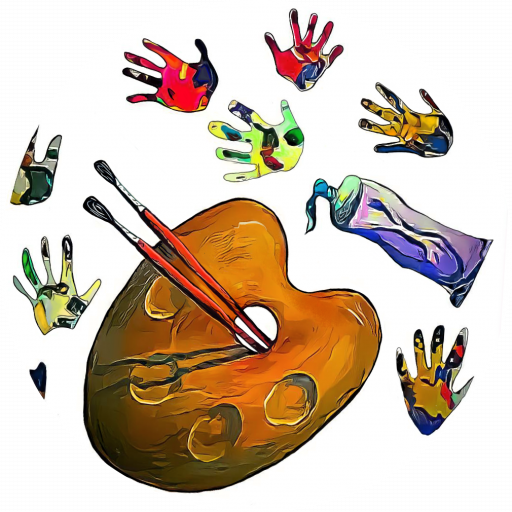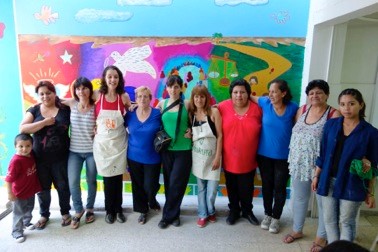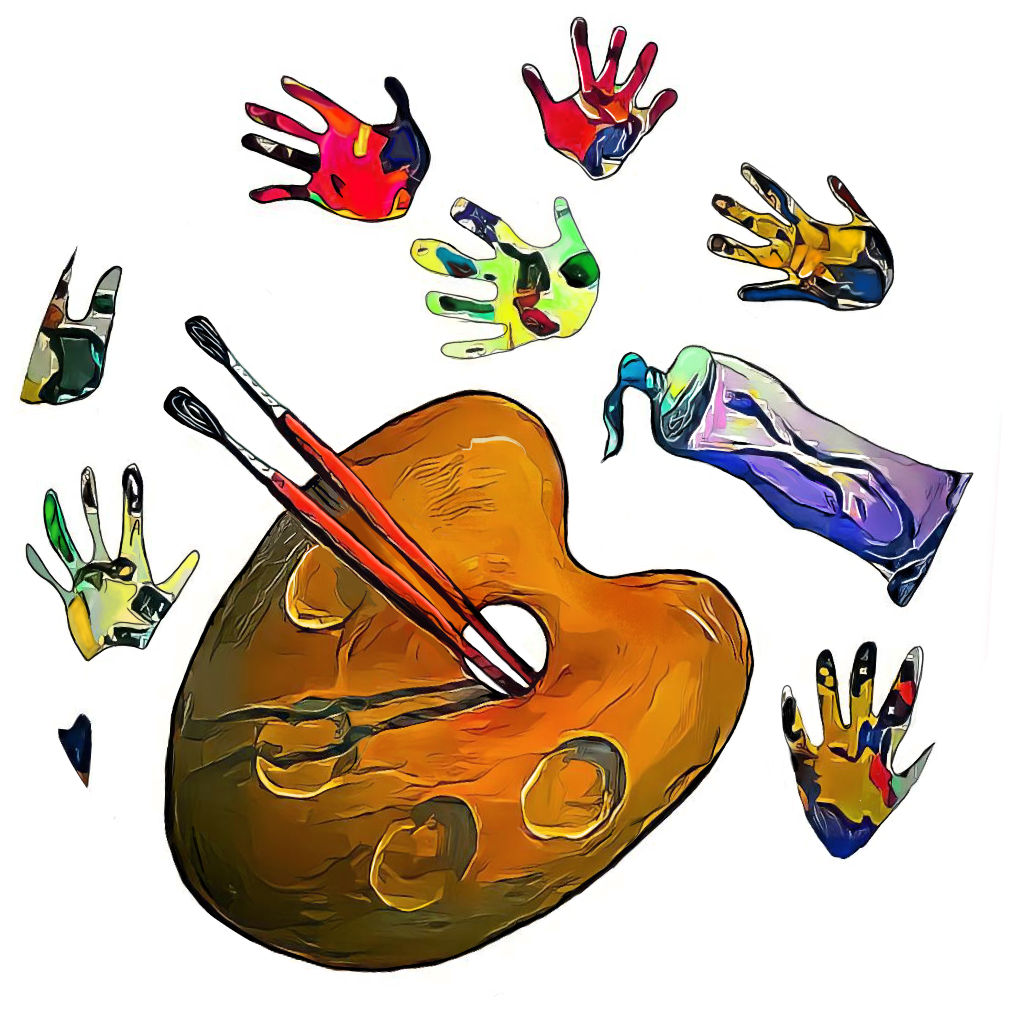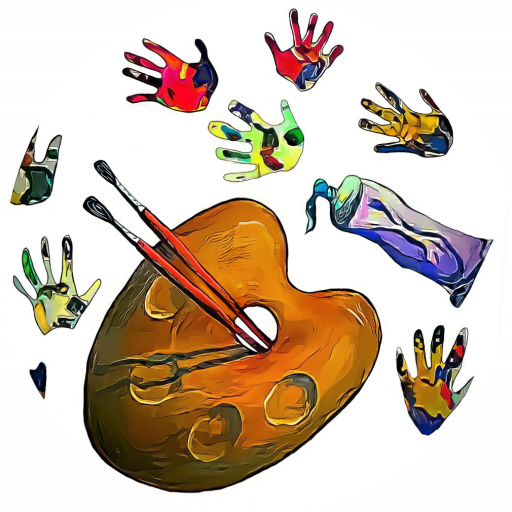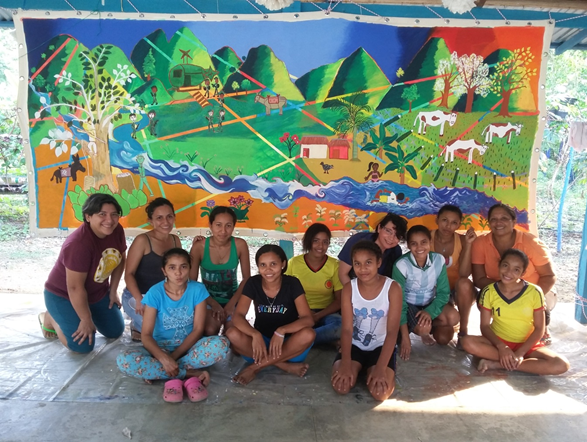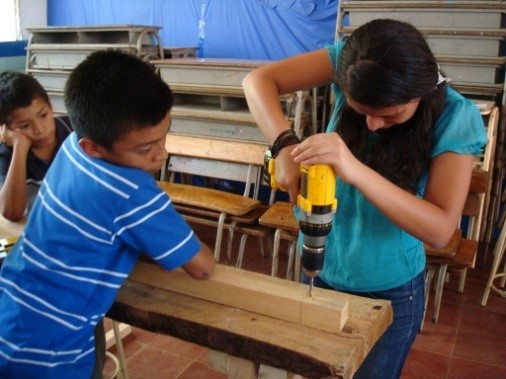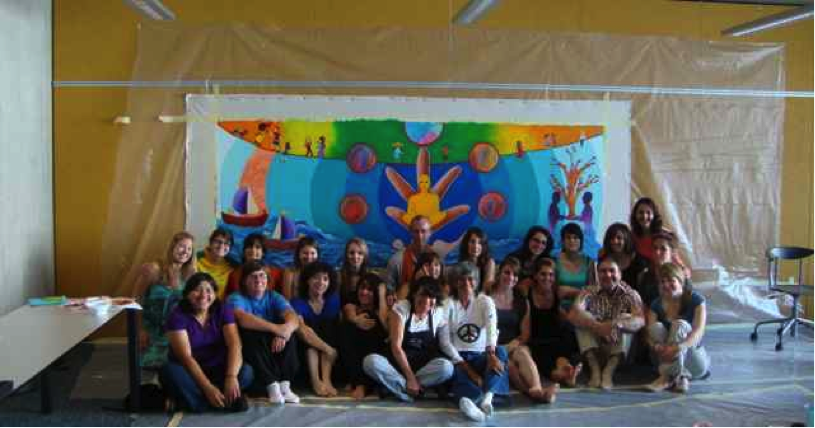August, September and the beginning of October in Perquin
From my traveling journal:
August 26, 05
La Antigua, Guatemala.
Finally, I arrived to La Antigua, in this quiet, tranquil month of August, in this peaceful Friday hoping for a time to rest, to reflect, to stop the craziness of so much activity, running from here to there, to calm the intensities that have been occurring since I arrived to El Salvador in March of this 2005.
It is unusual to depart from a country with the purpose to reflect in another one. El Salvador has demanded from me total dedication. This period of activities, joyful realities around and because of art, has disengaged me, at least temporarily, from the reflexive Claudia, the “subtle” artist as some critiques may have described me when they talk about the artist who can observe and register the interstitial spaces of being.
In this reality hammered by wars still lived in El Salvador today, we, the people who are part of this passionate and unforgiving “vortex”, surf an immense wave that takes us far from the place where we are coming from.
To me, this has been always the case every time I came to El Salvador, whether to exhume or to work in art.
With the pretext of renewing my visa I came to La Antigua to think, to write, to remember, to register some of the events that have been weaving as a tapestry in which the structure has been the community of Perquin and each string of colorful thread has been art itself serving as a beautiful and tender liaison that connects me to Morazán.
How to start?
I am drinking a delicious coffee in a place where bread is being baked. I am writing while I am surrounded by comfortable smells. An ochre colored wall, with imprinted time of strong suns and torrential rains, looks at me from across the street making me think of the subtle passages of life that mold the way we remember.
What is what I remember from before arriving to Perquin?
I remember imagining that I would collaborate with the community, that art was going to be re- introduced in Perquin in the form of murals, workshops, children, people enjoying. What has happened since March is a response to all the expectations I had, logarithmically increased by fervor and acceptance of art as a main protagonist in town.
I brought with me to Guatemala a biography of Che Guevara. The author, Paco Ignacio Taibo, narrates that when he was researching Guevara’s life he was obsessed by Che. Now, that the book is written, Che’s ghost still appears to scold him “ for not piling up bricks in the building of a school under construction”.
I read this and it moves me. I do not even know why?
There is a period in the recent history of Latin America before infamous globalization was imposed upon defenseless economies, before successful or questionable revolutions took place, before bloody and opaque contra-revolutions darkened our freedom, where the simple candor and desire to help others and the exercising of solidarity was tangible. In this almost forgotten period, the thought of giving of oneself the best was part of a communal project and not a random accident of eccentricity. Today, infused by cynicism, it makes us slightly embarrassed to enunciate such a concept. However, for a whole époque of our continent this sentiment was real, those feelings where shared by a great majority. To those who have transited the “aftermath” of such a conviction, we have adhere ourselves to the concept as grandchildren of a legendary grandfather.
In the concrete case of Che Guevara, his proposal to institutionalize the “voluntary work” for the Cuban revolution started, exactly, with the creation of a school that was going to be christened after a Comandante recently killed: Camilo Cienfuegos. Above all, he was a dearest friend of Che’s. So, Comandante Guevara did, actually, pile up bricks in the construction of a school and he believed that it was a valuable, needed and possible kind of work.
Transiting life, I have remembered a phrase attributed to Che that has inspired me at times I most needed it:
“Let’s not allow the Revolution to kill our tenderness”
I would add, from the stage of life I am at today, that to maintain tenderness IS a revolutionary act. It is an act of palpable heroism because everything in life appears to mark us in a way to leave us inconsolably alone, irremediably skeptic and profoundly sad.
It is heroic to remain tender and I declare with candor that one person alone can never achieve this kind of heroism. This, which has happened here in Perquin is so real because, exactly, it is not the result of only one person’s determination (could be myself or anyone) focused in creating an art project. What has happened here is that a whole community, from all angles, personal, institutional, from a historic realm, everyone! has been able to and has wanted to receive art with total lack of complexity in such a way that, whatever is being said, fastly transferred into what it is being done.
That is the reason for which so much has been accomplished in such a short time. This is to say, from March until now. Art has been an unstoppable dance of action and celebration.
The challenge regarding sustainability of the school for next year is funding. In this 2005, the salaries and absolutely everything regarding infrastructure, art materials, implementation and operation of the school has come from the money produced from an auction of my own artwork sold on May 15, 2004 at Intersection for the Arts. Many dear friends and even people who I did not know bought Bernardi art, in order to help build this dream turned into an actual project. Later on and still in 2004, two Bay Area agencies, the Potrero Nuevo Fund and the San Carlos Foundation contributed in the task and determination to “keep on adding bricks in the building of a school”
That is how the Art school was created. This is how it started and how it has been sustained through out 2005.
The school confronts financial challenges for 2006, but I have the conviction that everything, which has been created, will acquire its own life, its own inertia and I trust that possibilities to continue this project will appear.
I would like to share a “vignette” of a kind that manages to imprint our soul and that will hug us forever.
“D” is a FMLN ex combatant and one of the participants of our art workshops. She is, indeed, one of the most passionate participants who have discovered that she can create wonderful art. “D” has become a great painter, indeed. Her history, as that of many people here is immense and terrible. From what I could tell, I can say that her twin sister was “disappeared” in 1980 and that same year her older sister was killed by the Salvadoran army. After that, “D” came to the mountains and she fought the war for 12 years.
Among the physical consequences that the war left upon her it can be counted chronic migraine, deteriorated teeth to the point that nowadays they are all replaced by prosthesis and a weak immune system that makes her health fragile.
I would like to add that “D” is 47 years old.
Among the traces left in her soul, she has shared with me many times the effect of insomnia.
A while back, she told me without too many protocols,
“Look, yesterday was the first time in a looooooong time that I did not dream with the war. Instead, I dreamt with my next painting”
I trust that whoever is reading these lines will know how to measure the immensity of that confidence.
Another “vignette”: Padre Rogelio gives mass every Sunday at 8:00 am in the Church of Perquin. Since Sunday is the only day reserved to rest, to recover from the feroutious activity of the week, I have not attended so very frequently, the Sunday masses.
In one of the services I did participate, Rogelio spoke of the parable of the farmer who plants seed in hostile earth, acid land, and threatened terrain. While he narrated the parable, he was reflecting and giving examples of the life of the people of Morazán.
When he arrived to the sequence in which the farmer, finally, plants the seeds in fertile land, he mentioned that the day before he had been at an event organized by the Music School directed by Mia Vercruysser and the Grupo Morazán in the community of Segundo Montes. Rogelio spoke about how the music students and young musicians had recovered the concept of “ building together and giving fruits” through art. He spoke about how lucky we all are, here in Perquin, because we have our Art School where children, adults, the elderly, people of all backgrounds, of very different economic strata and political believes come together to “make art”.
He ended his sermon by reading a poem written by Paco Cutumay, musician, poet, huge figure through the history of the Salvadoran war, killed brutally, remembered lovingly.
In his poem, Paco Cutumay talks to Leoniditas, a “compa”/ co-fighter, a combatant that had just been killed. He tells him that he will never forget his laughter. He will never forget the last conversation they had in which Leoniditas told Paco that “he was fighting this war in order to secure that. sometime in a possible future, this city of Perquin will have an art school”.
For reasons mostly of chance, of unbeliable coordinates of time that I have no way to predict, to understand and, certainly, not to choreograph, here I am in Perquin living the dream of people who fought and died convinced that in this pained Morazán some day, an Art School would be erected.
I will also trust here that the immensity of this confidence will be appreciated.
We keep on piling up bricks in the school of our souls!
~~~~~~~~~~~~~~~~~~~~~~~~~~~~~~~~~~~~~~~~
October 6, 2005
In Perquin, we have been suffering the effects of hurricane Katrina, hurricane Rita and we are now, in the middle of hurricane Stan. The amount of water that has been falling is impossible to describe. Only poetically one could transfer the sentiment and I chose to describe it by saying that the body has forgotten how it feels to have sun upon it. Everything seems to be acquiring a greenish hue as if we were to be approaching a lake that is being formed in the edge of all paths. The landscape now resembles London in December or Amsterdam in January and not the tropical El Salvador where we, actually, are.
Beyond the incommodities of not having internet service, no electricity nor water, here in Perquin we are safe. The country has gone through terrible and devastating days in which communities had to be re located, leaving them in a state of great fragility, with no food, water or infrastructure. There have been deaths, mostly of elderly people and children. It has been a tragedy. In addition to that, the volcano in Santa Ana ignited and erupted adding to everyone’s confusion, to the imagination of some and to the confirmation of many (I adhere to this last category) that we are hurting the environment so badly by deforestation, the use of toxic chemicals and the negligence of the use of the land, that we are contemplating before us a precipitated climatic change.
As a woman told me: “We are using up our days”.
August and September have been months of beautiful and beloved visits: In August, Carlos Cartagena with his partner Katie and his son Carlitos Ernesto arrived. It was a big surprise! I saw him against the light, entering the Library of the Children’s Center and it took me a while to recognize him! Such was my disbelieve of finding him here in Perquin! Carlos shared with us a class of monotypes and talked to our workshops about what it is like to be a Salvadoran artist living in the US.
Also in August an ex student of mine, CCa alumni, Josué Rojas, while he was traveling through Nicaragua he called to tell me that he wanted to come and visit! So, Josué arrived! He participated in the painting of the Sports Mural and he shared with us his gifts by teaching several workshops on caricatures and how to create cartoons. Children and adults loved him and what he taught!
That same week my beloved friend Mary Houghteling came to visit me to this far land of Morazán! I was so moved and appreciative that she came all the way from Oregon and California to visit me for three days! In addition to this enormous gesture of love, Mary brought two suitcases filled with art supplies for the school and accepted no money for them. It was a huge contribution to our school!!!! And I have no words to express how much we all appreciate this gift, this gesture of generosity.
At the beginning of September, Tatiana Reinoza and Jeff Fohl came to visit us. Tatiana is a lovely Salvadoran young woman whom I met in California. She studied Art at Sacramento State University and although her studies had been in studio art, she has found a new vocation in the area of curatorial studies. I met her when she invited me to be part of a Latin American Women’s Forum that she organized while she was still a student.
When Tatiana confirmed her arrival to Perquin, I asked her, as I ask all our visitors that she would come ready to share something that she knows well. Tatiana came prepared with two lectures one about Salvadoran art and one about Latin American artists. She gave both presentations at the Mayor’s building to a large number of eager participants that came from Perquin and near by villages. On the last Saturday of her visit, and with an indescribable rain in the background, she delivered a third presentation to a group of young men and women at CEBES. They all absorbed the material with noticeable voracity. It was very important to have Tatiana’s contribution. Tatiana left for us her own reflections in the shape of a document that narrates her opinion and ideas of the people of Perquin and their passionate acceptance of art and art practice.
Jeff Fohl is part of the board of Intersection of the Arts. I was gladly surprised when he told me that he wanted to come and visit me in El Salvador. He is a great photographer and video artist and both activities he performed while he was here. Beyond the artistic work that he developed, I think that what it was really important for him was to be here. The impact was to be immersed in the community, to walk about, to listen, to look, to be, to allow himself to be transformed by the experience.
Jeff went back to the US and within days he communicate with a friend of his Michael Barger, whom I do not know personally but with whom I am building a dear friendship through emails, and both of them have undertaken a militancy in the task of getting funding for our Art School and Open Studio of Perquin for next year. From San Francisco, Jeff and Michael are moving all strings possible in order to get us funding for 2006.
The Potrero Nuevo Fund, and the dear solidarity of Bill Laven and Christine Pielenz have confirmed to us a grant for 2006 that will allow the Art School to take the first step into next year!
Incredibly, precipitated, this is the month #10 in this paradigmatic 2005. It is incredible to talk about ending projects instead of starting them.
*Mural at the School of Music Paco Cutumay in the community Segundo Montes.
*Mural in Torola
*Mural in San Julian, Sonsonate
*Mosaics in the municipal park of Perquin
*Last touches on the mural at the Library of the children’s center
*Last works in our painting and drawing workshops. Organizing of the last exhibition of the participant’s works
*Follow up and conclusion of the printmaking project of Memoria Histórica/ Historic Memory with youth from the Northern Region of *Support and strengthen of children’s workshops under the leadership of Rosa del Carmen Argueta, Rigo Rodriguez and Claudia Verenice Flores. It is a HUGE SUCCESS to have been able to create these three paid positions in our Art School. This has been possible thanks to the generous contribution of Doña Carmen Broz who gave us the funding to create and allocate funds into these three paid positions which will continue to exist through out next year.
I am transiting October, with a lot of work, a lot of love, anticipating the nostalgia I will feel at the time of departure from Perquin when I will return to Argentina and the US.
I am tenderly convinced that I will return next year as a predicament with multiple projects to be developed, with laughter and presages.
We will continue to pile up bricks in a school as Che wanted and we are tender, despite every thing.
Claudia Bernardi
Perquin, October 7, 2005
